Blog
The fundamentals of stakeholder strategy
A practical guide to tailored stakeholder management, offering strategies and tools to identify, map, and nurture relationships.
As the federal election campaign reaches its midpoint, patterns in media coverage and public attention are beginning to shift. Early social engagement was driven by cost-of-living pressures, energy policy, and political point-scoring, but has waned following the first leaders debate, despite this forum providing leaders the opportunity to set the agenda and strategies of the major parties. So how has coverage focus evolved since the first debate and are audiences still engaging with the campaign or switching off?
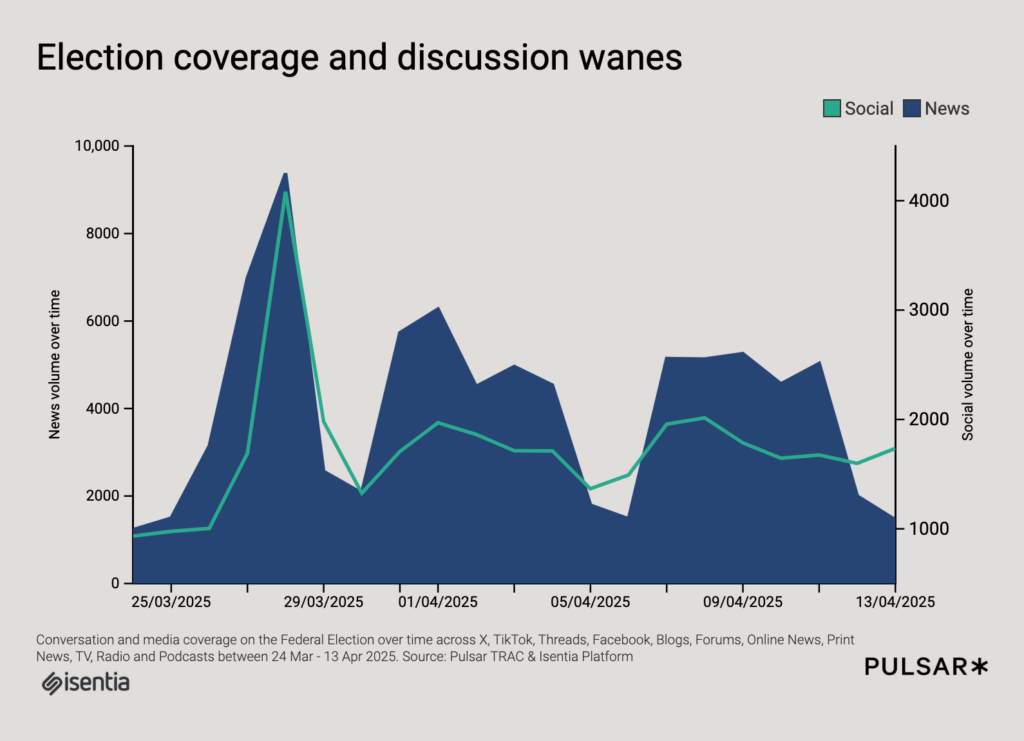
Social media engagement ahead of the federal election has been sharp and personal. It focused less on policy and more on identity and representation. From debates on topics such as immigration to housing stress and culture, social media has driven a values-first narrative. But while early attention was strong, both media coverage and social engagement have started to wane in the weeks since the campaign launched. The first leaders debate briefly reignited attention—trust, identity, and media—but coverage patterns suggest a shift away from daily blow-by-blow reporting towards broader social and cultural tensions.
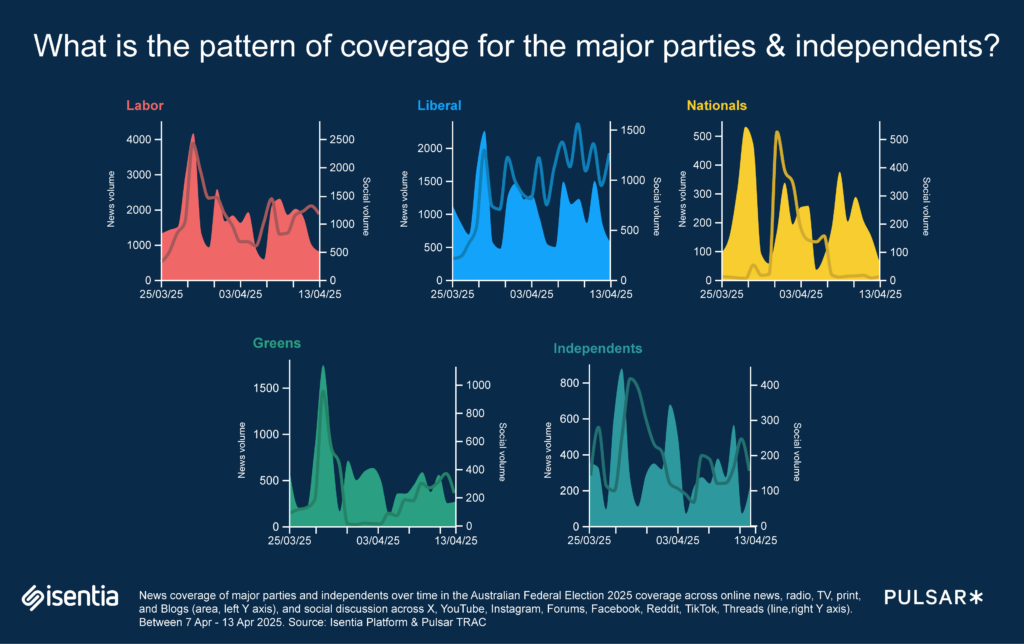
As the federal election campaign nears its halfway mark, last week’s media highlights show a contest still struggling to cut through. Key moments included the first leader’s debate, the Treasurers Debate, the energy showdown at the National Press Club, and Senator Jacinta Price’s Perth appearance with Peter Dutton, which drew attention for its MAGA-style rhetoric. The first leaders debate was billed as a chance to reset the race—but for many viewers, it reinforced existing divides. Media attention around the debate momentarily lifted visibility for all major parties—but the spike was short-lived. The only party that has seen continued increases in social media engagement is the Liberal Party. The Liberal Party’s sustained rise in social media engagement may be linked to its digital-first strategy, including an AI-generated campaign ad spruiking a fuel excise cut and a meme-style diss track targeting Anthony Albanese—tactics designed to capture online attention and drive shareability.
The Liberals also pitched a $1200 tax cut, Labor attacked their WFH backflip, and the Greens pushed housing and tax reform. Meanwhile, Dutton warned of a Labor-Greens-Teal alliance. Coverage suggests public engagement is driven more by polarising moments and political theatre than detailed policy.
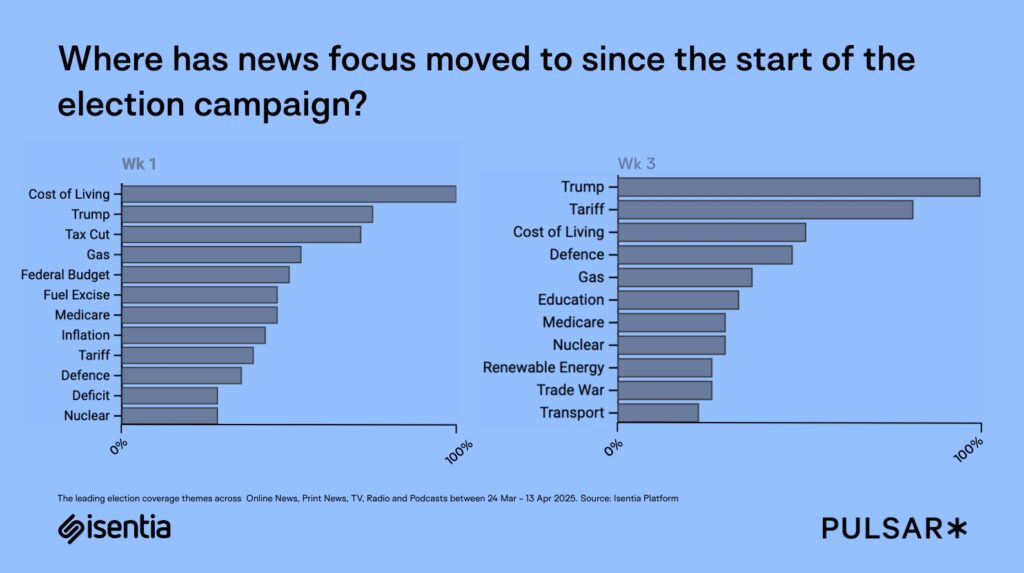
When the election campaign officially kicked off, cost-of-living pressures dominated the news agenda. Fresh off the back of the federal budget, it’s no surprise that affordable healthcare, lower gas and energy prices, and tax cuts were the key messages party leaders wanted to land with voters. But coverage quickly pivoted. In the past week, foreign diplomacy—particularly how each leader would manage Donald Trump—has surged in prominence. While Trump’s role in tariff threats has made headlines, his influence on the broader election narrative goes beyond trade. Media reporting has increasingly centred on Albanese and Dutton’s capacity to navigate a potential Trump presidency, with ideological alignment, national security, and economic fallout all in play. The first leaders’ debate was expected to refocus the campaign on domestic issues. However, it briefly touched on international concerns, with Prime Minister Anthony Albanese addressing the potential economic impact of Trump’s proposed tariffs. Albanese described these tariffs as an “act of economic self-harm” that would dampen global growth, highlighting the intertwining of foreign policy with domestic economic concerns. This suggests that sustained attention is more likely when domestic issues are reframed through the lens of foreign diplomacy, and national identity.
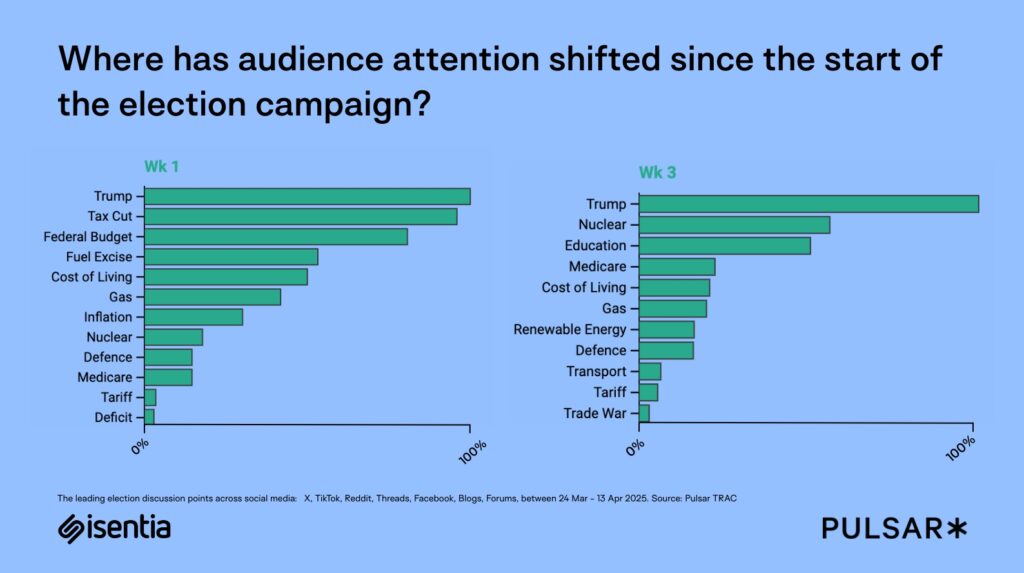
In the social media landscape, Trump was a flashpoint in election-related conversation. His influence—real or perceived—was quickly linked to the Liberal Party, with MAGA-style rhetoric and Trumpian policy cues gaining traction online. These narratives tend to escalate on platforms where ideological alignment and cultural grievance amplify engagement. But it wasn’t all imported culture wars—the federal budget, and the Liberal Party’s fuel excise rebuttal, also drove significant social chatter. In recent weeks, comparisons between major party messaging and Trump-era policy—from international student caps and nuclear energy to debates about school curricula—have continued to dominate discussion.
The first leaders’ debate briefly touched on foreign policy, with Albanese warning Trump’s tariffs could hurt global growth, while Dutton framed it as a test of strong leadership. Domestically, Dutton’s renewed push for nuclear power reignited social media debate—drawing comparisons to Trump-era policies and fuelling discussion about Australia’s energy future. At the same time on social media, promises like HECS cuts, free TAFE, and more funding for public schools sparked genuine engagement, especially among younger voters and education workers, showing that practical, future-focused policies can still cut through. Compared to the start of the campaign, where cost-of-living dominated as a top-line concern, the conversation has expanded: audiences are now weighing both hip-pocket issues and the national values shaping Australia’s future.
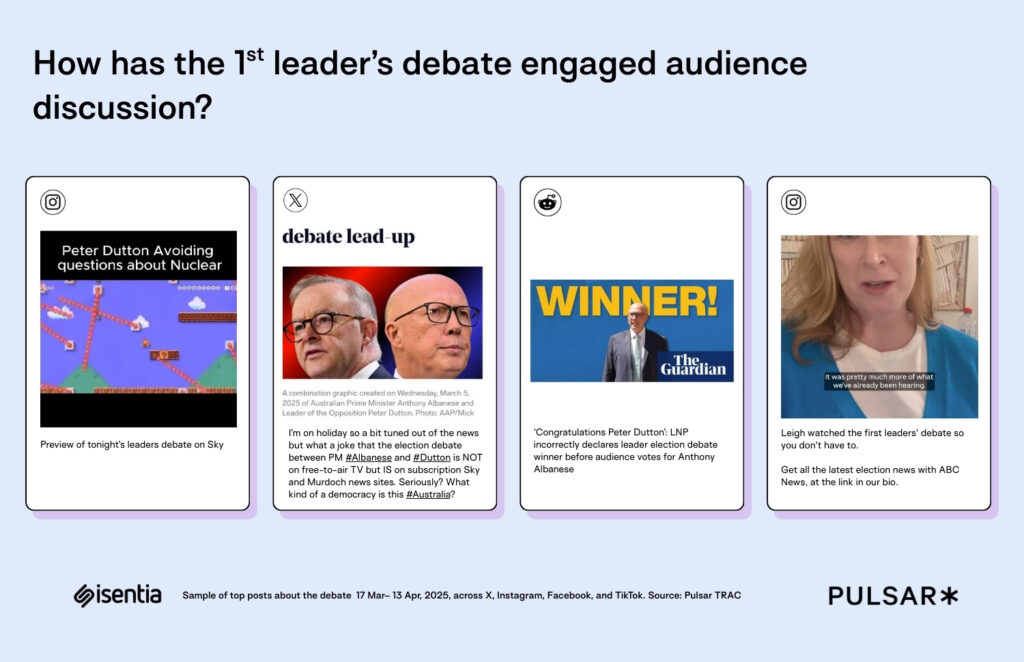
While the debate itself tended to be overshadowed by frustrations about access and media control, a few political undercurrents still surfaced. Anthony Albanese drew some positive mentions, but reactions were far from policy-focused. The Liberal Party’s early claim of victory became a point of humour, with several users likening it to Trump-style misinformation tactics. Disillusionment with the major parties ran deep, with repeated calls to “break the donor-fuelled duopoly” and shift support toward independents or smaller parties. Still, these reactions seem more like a symptom of broader voter cynicism than a sign of energised political engagement, reflecting broader themes around the declining trust.
The leaders’ debate didn’t reset the race—it refracted it, spotlighting how media coverage is now shaped less by policy detail and more by polarising symbols and cultural cues. As election day nears, the contest for attention is revealing just as much about media strategy and voter fatigue as it is about party platforms.
Loren is an experienced marketing professional who translates data and insights using Isentia solutions into trends and research, bringing clients closer to the benefits of audience intelligence. Loren thrives on introducing the groundbreaking ways in which data and insights can help a brand or organisation, enabling them to exceed their strategic objectives and goals.
A practical guide to tailored stakeholder management, offering strategies and tools to identify, map, and nurture relationships.
Across the communications landscape, teams are being asked to do more with less, while staying aligned, responsive and compliant in the face of complex and often shifting stakeholder demands. In that environment, how we track, report and manage our relationships really matters. In too many organisations, relationship management is still built around tools designed for […]
Get in touch or request a demo.